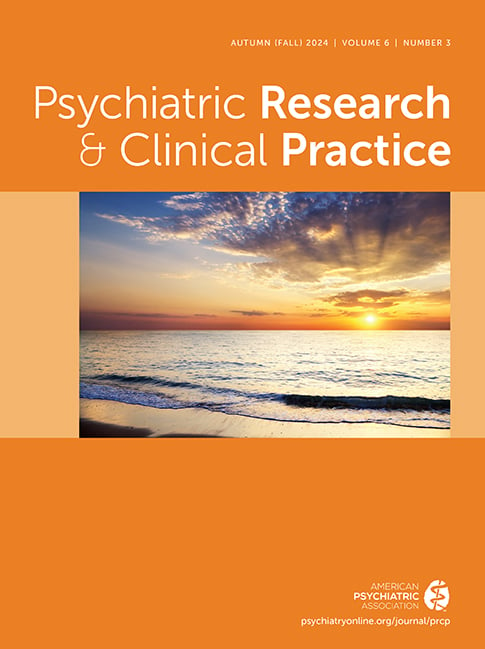Recency of Suicide Attempt, Ideation, and Reattempt in the Emergency Department: Managing Youth With a Past Attempt
Abstract
Objective
Methods
Results
Conclusions
HIGHLIGHTS
METHODS
Setting and Participants

Measures
Past SA
Recent SI
Reattempt within 3 months post‐ED‐discharge
Statistical Analyses
RESULTS
| Total sample (reported a past attempt at index ED visit and received a follow‐up, N = 351) | Participants who reattempted suicide within 3 months post‐ED‐discharge (n = 60; 17%) | |
|---|---|---|
| Age | 15.3 (1.5) | 15.0 (1.6) |
| Gender identity | ||
| Cisgender male | 71 (20.2) | 6 (11.7) |
| Cisgender female | 245 (69.8) | 45 (75.0) |
| Transgender/gender‐diverse | 34 (9.7%) | 8 (13.3) |
| Unavailable | 1 (0.3%) | ‐ |
| Race | ||
| White | 206 (58.7) | 39 (65.0) |
| Black | 69 (19.6) | 12 (20.0) |
| Asian | 1 (0.3) | 1 (1.7) |
| AI/AN | 3 (0.8) | ‐ |
| NH/PI | 2 (0.6) | 1 (1.7) |
| Multiracial | 32 (9.1) | 5 (8.3) |
| Unknown/unavailable | 40 (10.8) | 3 (3.3) |
| Ethnicity | ||
| Hispanic/Latino | 77 (21.9) | 10 (16.7) |
| Not Hispanic/Latino | 245 (69.8) | 45 (75.0) |
| Unknown/unavailable | 29 (8.3) | 5 (8.3) |
| Chief complaint | ||
| Medical/other | 165 (47.0) | 14 (23.3) |
| Psychiatric | 186 (53.0) | 46 (76.7) |
| ED disposition | ||
| Psychiatric admission/transferc | 139 (39.6) | 36 (60.0) |
| Non‐psychiatric admission | 20 (5.7) | 2 (3.4) |
| Discharged | 188 (53.6) | 21 (35.0) |
| AMA/other | 4 (1.1) | 1 (1.6) |
| Recency of past attempt relative to index ED visit | ||
| Within the past week | 103 (28.8) | 31 (51.7) |
| 1 week to 3 months | 68 (19.0) | 12 (20.0) |
| 3–6 months | 43 (12.3) | 6 (10.0) |
| 6 months to 1 year | 41 (11.5) | 6 (10.0) |
| Over 1 year ago | 96 (27.4) | 5 (8.3) |
| Sole report of past attempt over 1 year ago with no past month SI | 68 (19.4) | 4 (5.9) |
| Recency of SI relative to index ED visit | ||
| No past month SI | 136 (38.7) | 12 (20.0) |
| The last 24 h | 143 (40.7) | 41 (68.3) |
| Between 24 h and 1 month | 72 (20.6) | 7 (11.7) |
Recency of Past Attempt Before Index ED Visit, Full Sample
ED Disposition, Full Sample
Past Attempt and Past Month SI
Past Attempt and No Past Month SI
Reattempt Post‐ED‐Discharge and Recency of Past Attempt/Ideation
Associations Between Recency of Past Attempt and Reattempt
| Recency of past suicide attempt prior to index ED visit | Adjusted OR (95% CI) | p‐value | Adjusted OR (95% CI)c | p‐valuec |
|---|---|---|---|---|
| Past week | 4.8 [1.7–16.2]d | 0.01 | 3.7 [1.3–12.8]e | 0.02 |
| 1 week to 3 months | 3.1 [1.1–10.4]e | 0.04 | 2.8 [1.0–9.6] | 0.07 |
| 3–6 months | 2.6 [0.7–9.8] | 0.13 | 2.6 [0.7–9.6] | 0.14 |
| 6 months to 1 year | 3.0 [0.8–11.0] | 0.08 | 3.0 [0.8–1.0] | 0.09 |
| Over 1 year | Reference | Reference | Reference | Reference |
Associations Between Recency of SI and Reattempt
| Recency of suicidal ideation prior to index ED visit | Adjusted OR (95% CI) | p‐value |
|---|---|---|
| Past 24 h | 2.8 [1.1–7.6]c | 0.04 |
| 24 h to 1 month | 0.9 [0.3–2.5] | 0.90 |
| No past month SI | Reference | Reference |
DISCUSSION
Clinical Implications: Detecting and Managing Suicide Risk
Limitations
CONCLUSION
Footnotes
REFERENCES
Information & Authors
Information
Published In
History
Authors
Funding Information
Metrics & Citations
Metrics
Citations
Export Citations
If you have the appropriate software installed, you can download article citation data to the citation manager of your choice. Simply select your manager software from the list below and click Download.
For more information or tips please see 'Downloading to a citation manager' in the Help menu.
View Options
View options
PDF/EPUB
View PDF/EPUBLogin options
Already a subscriber? Access your subscription through your login credentials or your institution for full access to this article.
Personal login Institutional Login Open Athens loginNot a subscriber?
PsychiatryOnline subscription options offer access to the DSM-5-TR® library, books, journals, CME, and patient resources. This all-in-one virtual library provides psychiatrists and mental health professionals with key resources for diagnosis, treatment, research, and professional development.
Need more help? PsychiatryOnline Customer Service may be reached by emailing [email protected] or by calling 800-368-5777 (in the U.S.) or 703-907-7322 (outside the U.S.).
